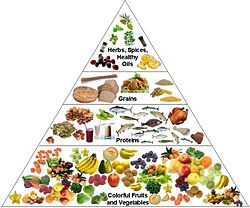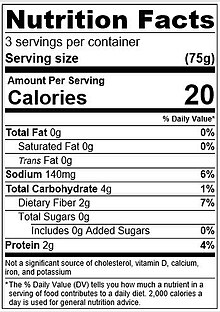Nutritional epidemiology
[1] Diet and physical activity are difficult to measure accurately, which may partly explain why nutrition has received less attention than other risk factors for disease in epidemiology.
Findings from these studies impact public health as they guide the development of dietary recommendations including those tailored specifically for the prevention of certain diseases, conditions and cancers.
[4] However, it is also argued that nutritional epidemiological studies yield unreliable findings as they rely on the role of diet in health and disease, which is known as an exposure that is susceptible to considerable measurement error.
[7] It is through the understanding of how nutrients and vitamins affect deficiency and disease early in the twentieth century that nutritional epidemiology became better established.
The inclusion of genetic risk factors in models of causation have made nutritional epidemiology an increasingly interdisciplinary field.
[16] These occurrences continue to be discovered with increasing scientific information and evidence, leading to more opportunities for successful intervention and prevention.
[12] Nutritional epidemiological study designs are required to establish a definitive relationship between diet and disease to be able to develop interventions and policies that will be implemented for the health of the public.
[12] There are observational and experimental investigations which have applicable study designs that fall under them including ecological, cross-sectional, cohort, case control, clinical and community trails.
[17] In nutritional epidemiology, Experimental studies may be used to draw causal conclusions between dietary exposures and health outcomes,[18] however for some diet-disease relations there are ethical considerations.
[17] Nutritional policy and procedure decisions are therefore guided by findings from a combination of sources to ensure accuracy, reliability and validity.
In nutritional epidemiological studies this refers to factors such as food including nutrients and non-nutrients and the social environment.
The development of a specific, feasible and relevant aim of study and target population is the first step in epidemiological research.
Studies that are well designed, have a strong foundation, detailed methodology and are governed by ethical principles will have the derived conclusions used to improve health care.
[20] Ecological studies use geographical information to examine spatial framework of disease and exposure but there is potential for systemic difference in classification language.
[20] Cross-sectional studies offer advantages such as the ability to measure multiple outcomes and exposures and, in the planning, and allocation of health resources as it assesses the burden of disease in a specified population.
Clinical trials however risk subject to experience side effects and inadvertent harm from the intervention therefore should only be considered when supporting evidence is strong.
[6] Nutritional epidemiology aims to deliver knowledge on how to cope with an imbalance between nutrients that causes illness such as anaemia, goitre wasting and stunting.


